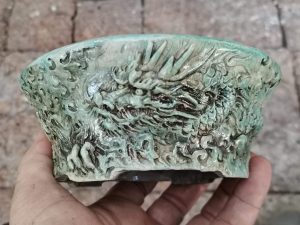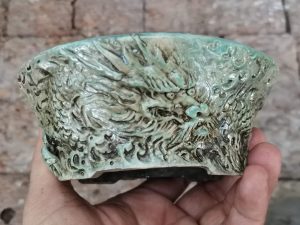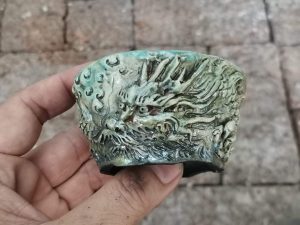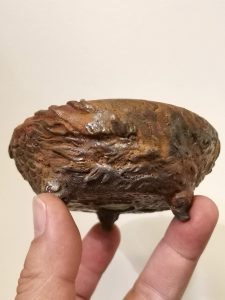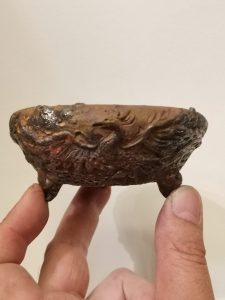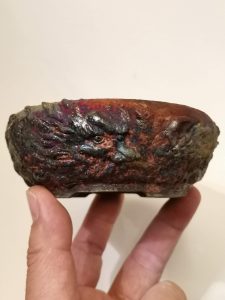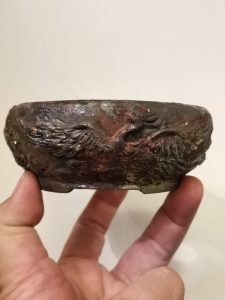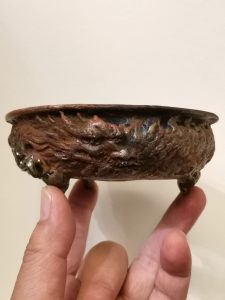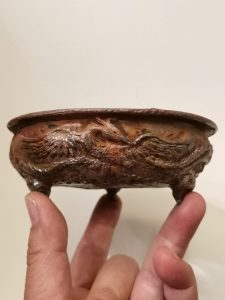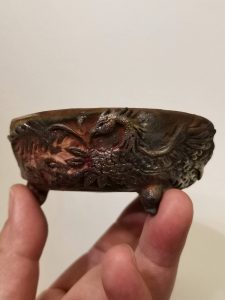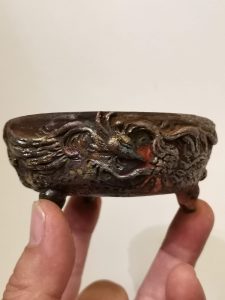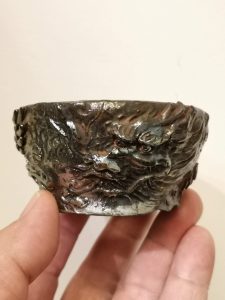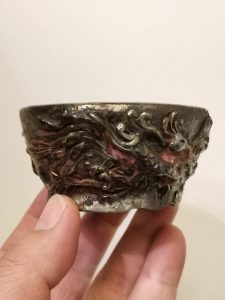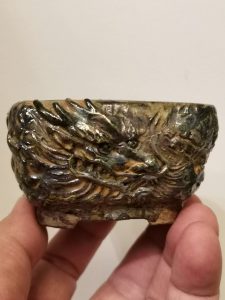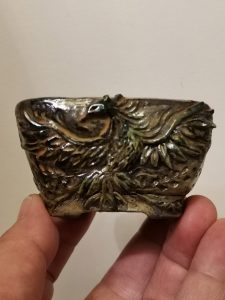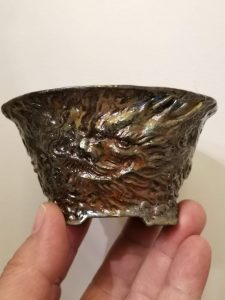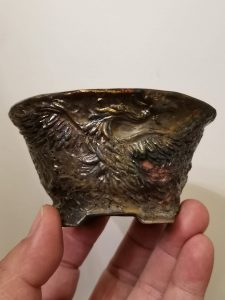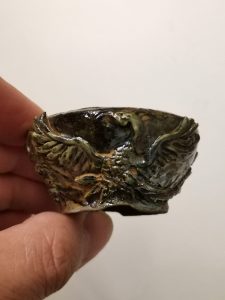Raku pottery is a type of Japanese pottery that has a history spanning over 400 years. It is famous for its unique crackled glaze and unpredictable patterns. The origins of Raku pottery can be traced back to the late 16th century in Japan when a tea master named Sen no Rikyu wanted to create tea bowls that were simple, rustic and imperfect to emphasize the beauty of the tea ceremony and the impermanence of life.
Rikyu commissioned a potter named Chojiro to create a new type of pottery that would meet his vision. Chojiro developed a technique for creating low-fired pottery that was simple, rough, and rustic. He used a special type of clay and a simple glaze made from feldspar, quartz, and other minerals.
Rikyu’s successor, Donyu, further refined the techniques of Raku pottery and expanded its use beyond tea ceremony utensils. Raku pottery became popular among other tea masters and aristocrats, leading to the emergence of various styles and techniques.
In the 19th century, Raku pottery experienced a decline in popularity as Japan underwent Westernization. However, in the early 20th century, Raku pottery was revived and gained international attention when a group of potters, including Kichizaemon Raku, presented their works at the 1910 International Exhibition in Brussels.
Raku pottery continued to evolve in the 20th century, with artists experimenting with new techniques and materials. American potters also began to adopt the Raku firing technique and developed their own styles.
Today, Raku pottery is still made in Japan and around the world. The process involves shaping the clay by hand, glazing it with a special type of glaze that contains metallic oxides, and firing it in a kiln at a low temperature. The pottery is then removed from the kiln while it is still hot and placed in a container filled with combustible material, such as sawdust or straw, which causes the glaze to crackle and create the unique patterns. Raku pottery continues to be prized for its unique beauty and historical significance.
——————————————————————————————————————
เครื่องปั้นดินเผาราคุเป็นเครื่องปั้นดินเผาญี่ปุ่นประเภทหนึ่งที่มีประวัติยาวนานกว่า 400 ปี มันมีชื่อเสียงในเรื่องของการเคลือบที่แตกร้าวและรูปแบบที่คาดเดาไม่ได้ ต้นกำเนิดของเครื่องปั้นดินเผา Raku สามารถย้อนไปถึงช่วงปลายศตวรรษที่ 16 ในญี่ปุ่น เมื่อปรมาจารย์ด้านชาชื่อ Sen no Rikyu ต้องการสร้างชามชาที่เรียบง่าย เรียบง่าย และไม่สมบูรณ์แบบ เพื่อเน้นย้ำถึงความสวยงามของพิธีชงชาและความไม่เที่ยงของชีวิต
ริกิวได้ว่าจ้างช่างปั้นชื่อโชจิโร่ให้สร้างเครื่องปั้นดินเผารูปแบบใหม่ที่ตรงตามวิสัยทัศน์ของเขา โชจิโระพัฒนาเทคนิคในการสร้างเครื่องปั้นดินเผาแบบใช้ไฟต่ำที่เรียบง่าย หยาบ และเรียบง่าย เขาใช้ดินเหนียวชนิดพิเศษและสารเคลือบธรรมดาที่ทำจากเฟลด์สปาร์ ควอตซ์ และแร่ธาตุอื่นๆ
Donyu ผู้สืบทอดตำแหน่งต่อจาก Rikyu ได้ปรับปรุงเทคนิคของเครื่องปั้นดินเผา Raku และขยายขอบเขตการใช้งานนอกเหนือจากเครื่องใช้ในพิธีชงชา เครื่องปั้นดินเผาราคุได้รับความนิยมในหมู่ปรมาจารย์ด้านชาและชนชั้นสูง นำไปสู่การเกิดขึ้นของรูปแบบและเทคนิคต่างๆ
ในศตวรรษที่ 19 เครื่องปั้นดินเผาราคุได้รับความนิยมลดลงเนื่องจากญี่ปุ่นเปลี่ยนไปเป็นตะวันตก อย่างไรก็ตาม ในช่วงต้นศตวรรษที่ 20 เครื่องปั้นดินเผาราคุได้รับการฟื้นฟูและได้รับความสนใจจากนานาชาติเมื่อกลุ่มช่างปั้นหม้อ ซึ่งรวมถึงคิจิซาเอมอน ราคุ นำเสนอผลงานของพวกเขาที่งานนิทรรศการนานาชาติปี 1910 ที่กรุงบรัสเซลส์
เครื่องปั้นดินเผาราคุยังคงพัฒนาอย่างต่อเนื่องในศตวรรษที่ 20 โดยศิลปินได้ทดลองใช้เทคนิคและวัสดุใหม่ๆ ช่างปั้นชาวอเมริกันเริ่มนำเทคนิคการยิง Raku มาใช้และพัฒนารูปแบบของตนเอง
ปัจจุบัน เครื่องปั้นดินเผาราคุยังคงผลิตในญี่ปุ่นและทั่วโลก กระบวนการนี้เกี่ยวข้องกับการขึ้นรูปดินเหนียวด้วยมือ เคลือบด้วยสารเคลือบชนิดพิเศษที่มีออกไซด์ของโลหะ และเผาในเตาเผาที่อุณหภูมิต่ำ จากนั้นนำเครื่องปั้นดินเผาออกจากเตาเผาในขณะที่ยังร้อนอยู่และใส่ในภาชนะที่บรรจุวัสดุที่ติดไฟได้ เช่น ขี้เลื่อยหรือฟาง ซึ่งทำให้เคลือบแตกและสร้างลวดลายที่เป็นเอกลักษณ์ เครื่องปั้นดินเผาราคุยังคงได้รับการยกย่องในด้านความงามที่เป็นเอกลักษณ์และความสำคัญทางประวัติศาสตร์
